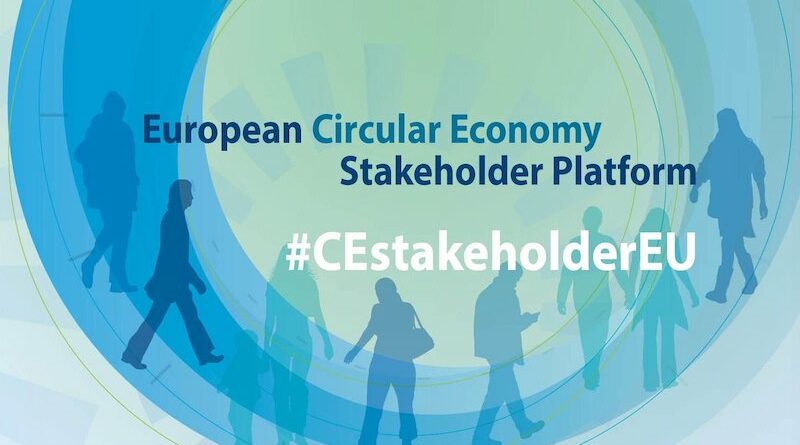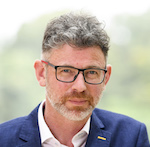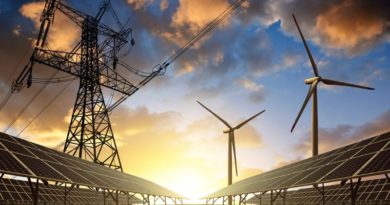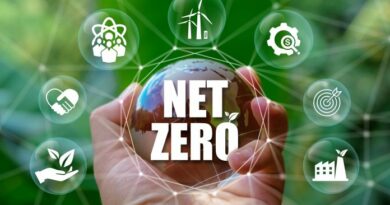
The role of Circular Economy Actors in Europe
There is an old saying that money makes the world go around. In our drive to transform how our economy works it would be fair to say that people make the circular economy go around. Those people come in the form of the many stakeholders who are driving innovation, shaping policy, and changing business models to embrace circularity.
In December 2015 the European Commission published the first Circular Economy Action Plan, an ambitious range of legislative proposals that would seek to minimise and ultimately eliminate waste from our society.
The focus of the Action Plan was very much on waste management, and some early rules on ecodesign. At this stage ecodesign still simply meant more efficient electrical products.
Something was missing to make this Plan a success. That crucial element was the people. The actors, the businesses, the innovators, the think tanks and the regional governments who saw the reality, on the ground, in member states and would be at the centre of actually implementing these first changes. They needed a channel to be heard. Equally, the European Commission needed a means of reaching these important players.
This is where the European Economic and Social Committee (EESC) came in. The EESC is enshrined in the Treaties on the Foundation of the EU. The Committee ensures that organised civil society can be heard within the institutions. It brings together employers, trade unions, and civil society organisations.
It was my honour as the EESC’s appointed rapporteur to respond to the Circular Action Plan to propose to facilitate a group of stakeholders to be actively involved and engaged.
Together, the EESC and the European Commission established the European Circular Economy Stakeholder Platform (ECESP). Together we negotiated how this platform would work.
Importantly, we gave ownership of the platform to the stakeholders; businesses, think tanks, NGOs, existing circular networks and local government. The ECESP website has since become the one-stop-shop for the circular economy. The go-to space to get information on the latest developments on Circularity. It is a hub where we share good practices, where we share knowledge, and where we share what is currently happening in this exciting space.
The Knowledge section has studies, position papers, presentations and reports. The same goes for the Good Practices section.
The content on the website comes from the Stakeholder. Peer to peer sharing is at the heart of ECESP. Visitors to the website can search by area of interests, or by the challenges they are trying to address, or even by country. To facilitate the latter there is an interactive map on the website that allows visitors to enjoy a whistle-stop tour of Europe and see what is happening in the world of Circular Economy.
ECESP’s annual conference is a two-day event hosted by the European Commission and the European Economic and Social Committee. The two-day event is the Rendez-vous for the circular economy actors and community. The event is an opportunity to listen to high level speakers, participate in workshops and visits stands with projects and exhibitions. The next conference will occur on 27 and 28 February 2023. Check our website for more details.
A great and ambitious Platform requires coordination. For this purpose, we established a Coordination Group, where after I chaired the inaugural meetings, we handed the chairmanship over to the stakeholders.
The Coordination Group gathers a broad spectrum of organisations with a pan-European reach.
This handover has been key to its success because it allowed people at the front of our economy and society transformation to lead the direction and conversations of the Platform.
Together this Coordination Group selects yearly important circular economy topics discussed in more detail in smaller formations called Leadership Groups. These Groups design a series of events, the #EUCircularTalks, to reach out to an even wider circular community, sharing ideas, learning from each other, answering questions and sharing challenges within specific sectors.
Beyond that, ECESP has brought together people from different sectors and geographical areas and allowed an open exchange. This aggregation has been critical to breaking the silos we can all operate in by default.
The success of ECESP reached beyond the initial specialised audience. We have feedback from New York to Sydney on how ECESP serves as a model for stakeholder engagement – putting people at the centre of the circle.
Partners such as the European Investment Bank and the World Bank joined the Platform, as financing arrangements and support for those who want to transition to a circular operating model became essential.
All 24 Coordination Group members are visible on the ECESP’s website. They drive the work, they keep the circle turning. Success in the Circular Economy relies on exchanges, relies on people, and relies on working together.
ECESP is really an example of people making the circular economy go around. Anyone can get involved. Join us for an #EUCircularTalk, attend our annual conference, engage with us on Twitter or LinkedIn, exchange with the Coordination Group members, submit good practices or reports to the Platform via the website, we want to meet and hear from you.
I look forward to meeting you on the journey.




